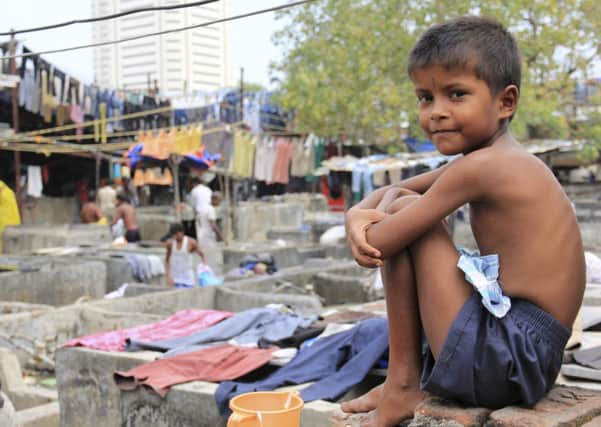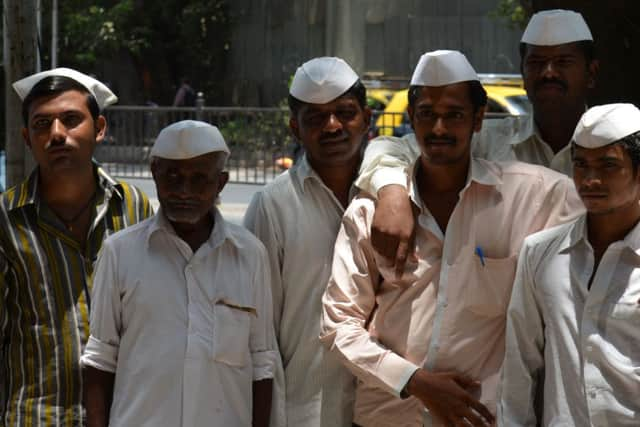Travel: India’s melting pot


When the tour guide points out the benevolent-looking old man approaching us on the street, wearing loose-fitting clothes, thick-lensed spectacles and sandals, I assume he must be a holy man. But like most assumptions you make when you’re a nine-hour flight from home, it turns out to be wrong.
Instead of blessing the naïve tourists before him, he ambles along towards another man leaning by some park railings. They exchange a few words, then the elderly gent takes out a needle and some cotton from a satchel and proceeds to rummage around in the other man’s ears, rendering them wax-free.
Advertisement
Hide AdWhat, to foreign eyes, appears to be a strange custom is, according to our guide, actually a dying one, as Mumbai begins to move towards a more aspirational, western beat.


While the multinational brands may have taken over the billboards and billionaires’ apartment blocks now compete for space with the jumble of slums and shops, it’s clear that this great city still runs on Indian time. So for every fast-food café there are ten street food stalls, for every German-made limousine there are a hundred Tuk-Tuks, and for every designer clothing shop there are a thousand makeshift roadside emporiums.
To help us avoid any more Mumbai mistakes, we are taken on a heritage tour by our guide, to see the city that’s largely unchanged since it was known as Bombay, the former stronghold for the British Empire’s trading interests.
An early start is needed to make the most of our first destination, the Sassoon Docks. Established in 1875 by Albert Sassoon, the son of a Jewish trader, on reclaimed land in this city of seven islands, it is a place that is rooted in a daily routine that’s not changed much in 140 years, but is fascinating nonetheless.
The first thing that hits you is the smell: if you think your local fishmonger smells fishy, this is like the contents of the sea have been condensed into a syringe and injected up your nostrils. It’s immediately clear why: fish is everywhere.
Women of all ages sit bow-legged in circles, charged with the unenviable task of cleaning mountains of shrimps, while the fishermen come and go from their great, battered old boats, pushing carts towards the weighing stations, barking at anyone in their path.
Advertisement
Hide AdTaking photos is banned here, and a surly, moustachioed official follows us around on a scooter, just in case we don’t comply. There are no other tourists around when we visit, and the Koli people who make up the majority of Mumbai’s fishing community regard us with curiosity and amusement. Why, after all, would anyone want to visit such a normal place of work and trade? What they don’t know is that to us this place is a head-spinning assault on the senses, even if we won’t have the photographic evidence to prove it.
Just as the Kolis have their role in Mumbai’s 21 million strong human rhythm, so too do other groups and castes. The dabbawalas also carry out a well-defined job: they deliver lunch to the city’s office workers, and they do it so well their system has been recognised by Harvard Business School as being among the world’s most efficient.
Advertisement
Hide AdEvery day in the late morning, hot meals are collected in tin “tiffin” boxes from the workers’ families, and they are transported, either by rail or bike, to city centre offices. Lunch is eaten, and the empty boxes are returned to the workers’ homes.
It’s been estimated that on average only three boxes miss their destination per million deliveries. There are no computers behind this network; it is the humble dabbawalas, distinguishable on the street by their white caps, who are solely responsible.
Already the subject of a crossover movie hit, The Lunchbox, when we’re introduced to a team of dabbawalas it’s clear they take pride in their job. And with this extraordinary system growing every year, it’s just one of the customs that may seem outdated or needlessly complex to westerners, but has become part of the heartbeat of this metropolis, as essential to the emergent white collar workers as public transport or plumbing.
The same could be said of the men who wash Mumbaikars’ clothes in the open air laundries, or Dhobi Ghats, or the taxi drivers who sleep in their cars overnight before navigating Mumbai’s relentless traffic in their old black-and-yellow Fiat 1100s, or even the old women who keep cattle on the street and sell bunches of long grass to passers-by to feed to the sacred beasts for good luck.
While Mumbai is a city of long-standing customs transplanted from Indian village life, you can’t ignore the fact that it’s also plugged into the global grid of money, politics and power.
In the hotel where we stay the first night, the Vivanta By Taj President, suited Indian businessmen mix with holidaying Europeans, while restaurants like the Konkan Café, where we eat a sumptuous taster meal of coastal cuisine, hosts middle class families, birthday parties and local celebrities.
Advertisement
Hide AdIf there’s one part of Mumbai that encapsulates this upwardly mobile outlook, it’s Bandra. Formerly a suburb to the north, it’s now been swallowed up by the city and has become the glamorous, seaside domain of the hip young set – largely due to the magnetic appeal of Bollywood.
Our second hotel of the trip, Taj Lands End, sits in a prime location at the end of the leafy promenade.
Advertisement
Hide AdLike Los Angeles, Mumbai is a city where people pursue their dreams, and Bollywood is a huge part of this. The Mumbai-based film industry is more productive than ever, turning out 1,000 titles per year (about double that of Hollywood).
While it has yet to harness the potential for film tourism, in recent years a few studios have opened their doors to tour parties, and we’re lucky enough to get a glimpse behind the scenes.
Unfortunately, a workers’ strike means there are no live shoots taking place, but we do get to try out our vocal talents in a dubbing studio (embarrassing but fun), and poke around the empty sets (one for the Indian MasterChef is surprisingly basic, while a hospital ward is close to the real thing, in scale if not in detail).
While there are no Bollywood stars on set, as a consolation we are presented with a colourful, energetic show by four professional dancers, who seem impervious to the stifling heat.
Their mix of contemporary choreography and old-fashioned innocence is yet another reminder of how the Indian experience, even when it’s at its most modern, always seems to be interlaced with tradition.
With its ear cleaners, fisherwomen, dabbawalas and Bollywood dancers, Mumbai isn’t in any danger of becoming an air-brushed, homogenised global metropolis any time soon and that can only be a good thing.
Advertisement
Hide Ad• Four nights in Mumbai, staying at Vivanta By Taj President and Taj Lands End (two nights at each hotel), costs £1,350 per person based on two people travelling together and staying in a double/twin room. This includes return adult airfare on Virgin Atlantic (economy class), and a Shopping Tour, Bollywood Tour, private transfers, sightseeing and excursions by Greaves Travel, who offer tailor-made tours, tel: 020 7487 9111, www.greavesindia.co.uk; www.virginatlantic.com